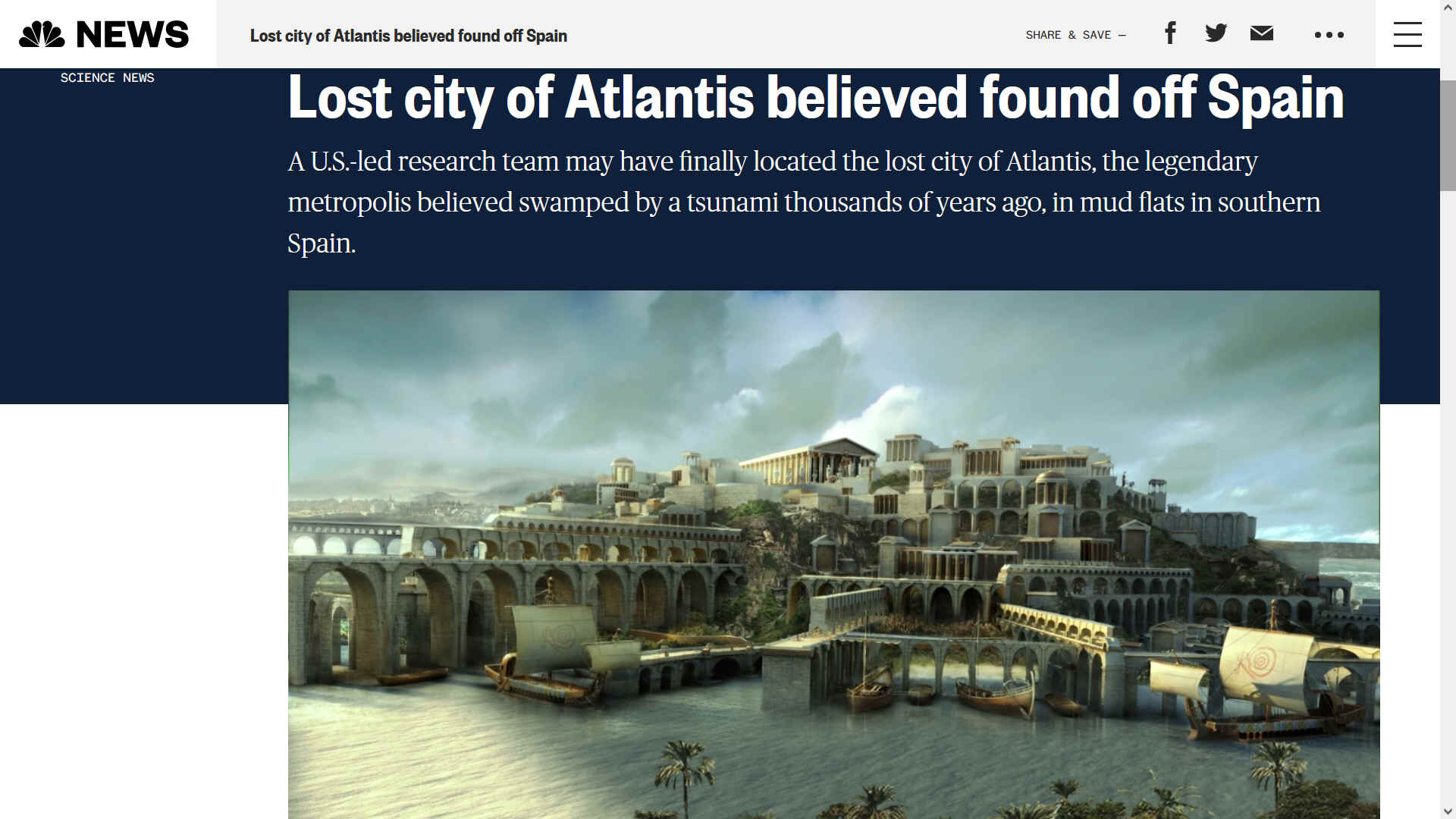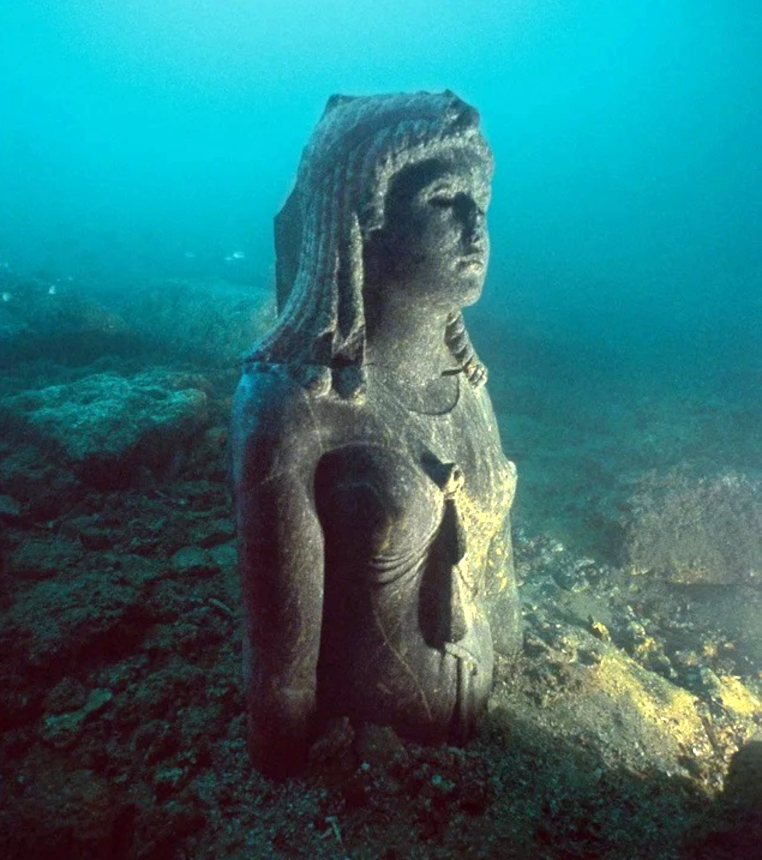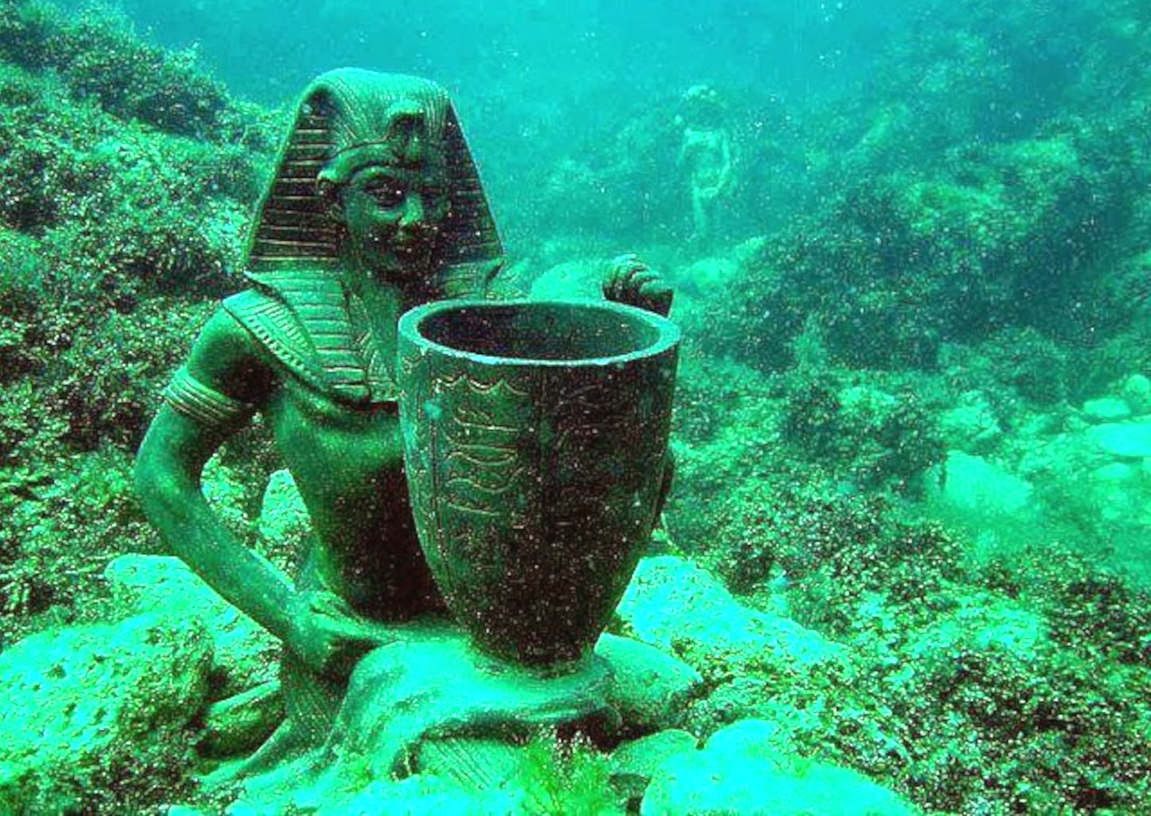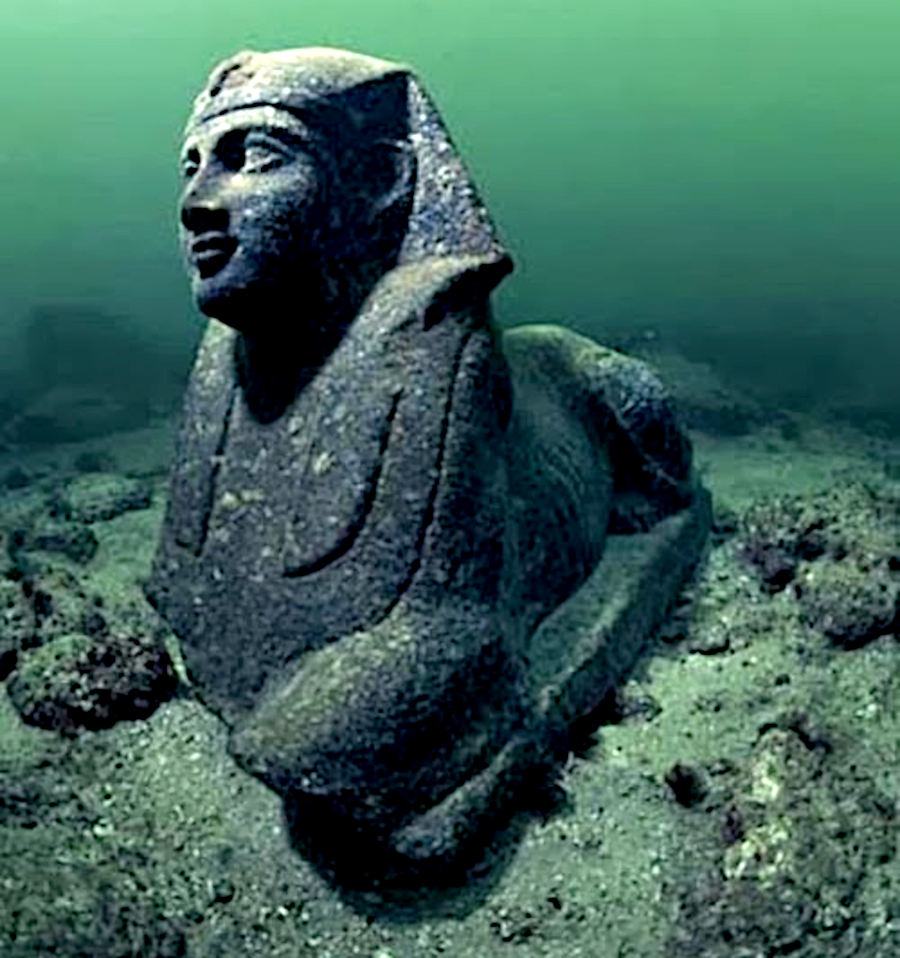|
THONIS, HERACLEION - EGYPT
OCEAN AWARENESS - UNDERWATER ARCHAEOLOGY
Please use our A-Z INDEX to navigate this site or return HOME
|
|
|
RACE AGAINST TIME: Ocean levels are rising as the Arctic and Antarctic ice caps melt from being warmed due to climate change. Today islands are sinking as we write. That is the legacy that we are creating, and must do our utmost to undo.
|
|
|
|
|
|
Long lost Alexandria has just as many legends and mysteries spun around it as Atlantis, but this one is real. And it has been found. And there are two sunken cities for the price of one. Alexandria’s remains lie literally a few feet off the coast, while Thonis-Heracleion rests a little farther off the coast of today’s Alexandria. Both spectacularly well-preserved, considering the ruins are more than 2,000 years old and littered with various shipwrecks, dropped anchors, even lost—and found—gold treasures. Temples and buildings of Thonis-Heracleion were once separated by canals, not unlike Venice, but how and why exactly the city became submerged is still a mystery.
Home to Cleopatra : For three hundred years, Alexandria was the capital of the ancient world. It was founded by Alexander the Great in April, 331 BC. Dinocrates, his architect, laid the plans of the city next to the old Egyptian village of Rhakotis. Dinocrates joined the city to the island of Pharos with the heptastadium, a long stretch of land into the Mediterranean. This created two harbors, the Eastern and Western harbors.
CLEOPATRA - This magnificent statue of the Ancient Egyptian Pharaoh queen is underwater at Thonis, Alexandria. In fiction, an ocean adventurer thwarts a plot by occultists to digitally reincarnate Cleopatra from her mummy. Cloning and other medical advances, make this theoretically a possibility. Just like Jurassic World. But, you'd need to find the Queen's sarcophagus and hope her DNA was complete enough to even stand a chance of making that happen in the real world.
It is a city shrouded in myth, swallowed by the
Mediterranean Sea and buried in sand and mud for more than 1,200 years. But now archeologists are unearthing the mysteries of Heracleion, uncovering amazingly well-preserved artifacts that tell the story of a vibrant classical-era port.
According to the Telegraph, leading research now suggests that Thonis-Heracleion served as a mandatory port of entry for trade between the Mediterranean and the
Nile.
Ocean literacy could be taught in schools, as part of an educational curriculum to raise awareness of just how important the subsea kingdom is for land dwellers.
What lost treasures might we discover as the mysteries of the deep unfold, armed with new underwater technology and an army of freshly educated researchers with an interest in the deep.
ATLANTIS - MEDITERRANEAN SEA ATLIT-YAM - ISRAEL
PAVLOPETRI - GREECE RUNGHOLT
- DENMARK YONAGUNI JIMA - JAPAN
REFERENCE
https://www
|
|
|
|
|
|
Please use our A-Z INDEX to navigate this site
This website is Copyright © 2022 Jameson Hunter & Cleaner Ocean Foundation Ltd, equal opportunities companies. This website is carbon friendly, using less energy to load on average per page via simplicity & picture optimization. The same may not apply to third party links.
|





